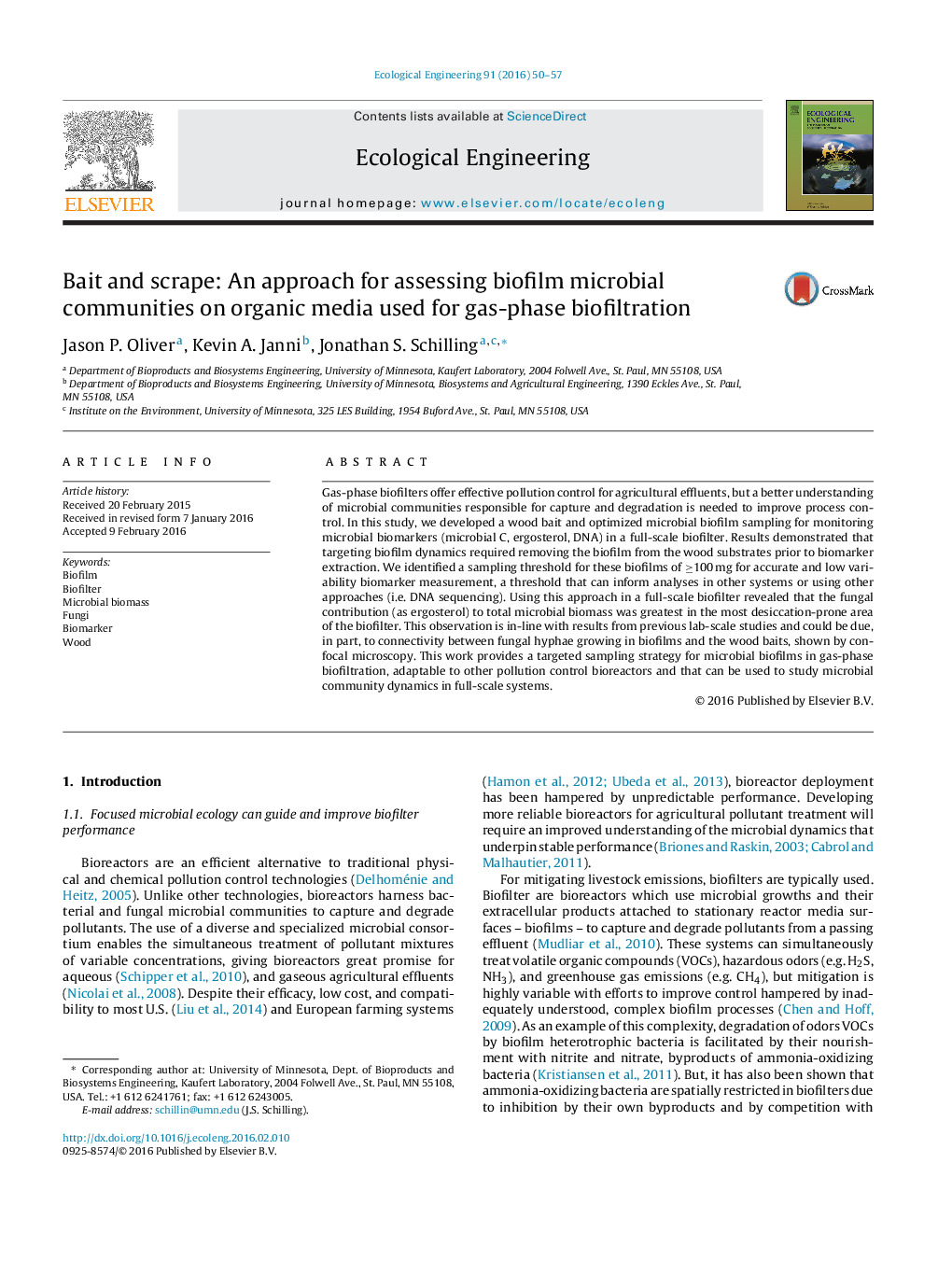| Article ID | Journal | Published Year | Pages | File Type |
|---|---|---|---|---|
| 6301282 | Ecological Engineering | 2016 | 8 Pages |
Abstract
Gas-phase biofilters offer effective pollution control for agricultural effluents, but a better understanding of microbial communities responsible for capture and degradation is needed to improve process control. In this study, we developed a wood bait and optimized microbial biofilm sampling for monitoring microbial biomarkers (microbial C, ergosterol, DNA) in a full-scale biofilter. Results demonstrated that targeting biofilm dynamics required removing the biofilm from the wood substrates prior to biomarker extraction. We identified a sampling threshold for these biofilms of â¥100 mg for accurate and low variability biomarker measurement, a threshold that can inform analyses in other systems or using other approaches (i.e. DNA sequencing). Using this approach in a full-scale biofilter revealed that the fungal contribution (as ergosterol) to total microbial biomass was greatest in the most desiccation-prone area of the biofilter. This observation is in-line with results from previous lab-scale studies and could be due, in part, to connectivity between fungal hyphae growing in biofilms and the wood baits, shown by confocal microscopy. This work provides a targeted sampling strategy for microbial biofilms in gas-phase biofiltration, adaptable to other pollution control bioreactors and that can be used to study microbial community dynamics in full-scale systems.
Related Topics
Life Sciences
Agricultural and Biological Sciences
Ecology, Evolution, Behavior and Systematics
Authors
Jason P. Oliver, Kevin A. Janni, Jonathan S. Schilling,
